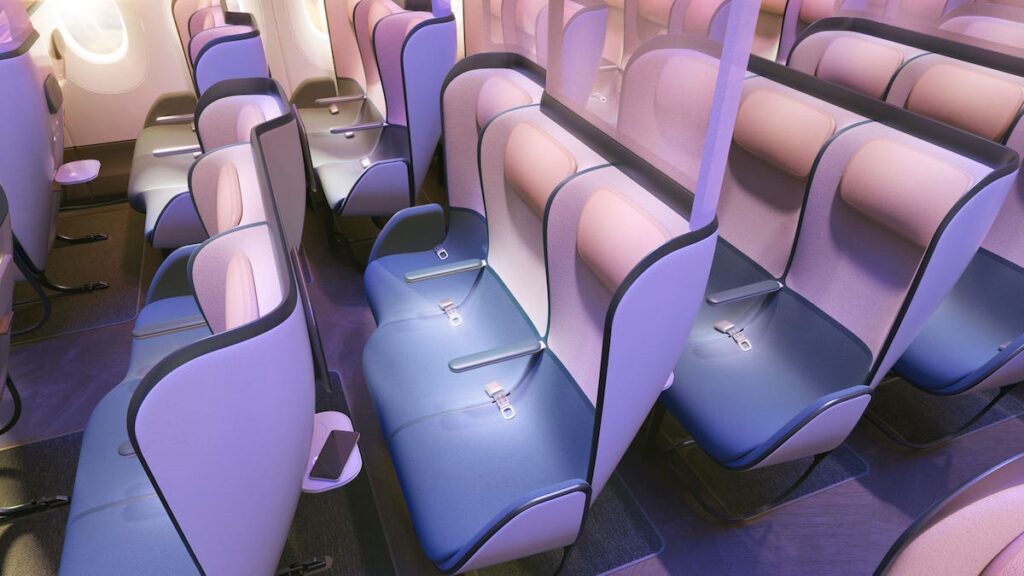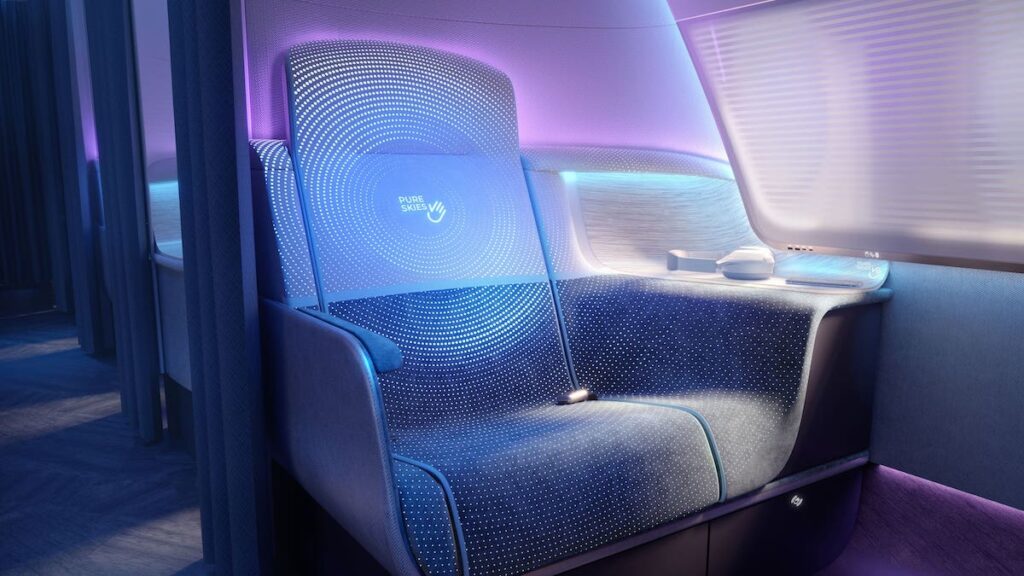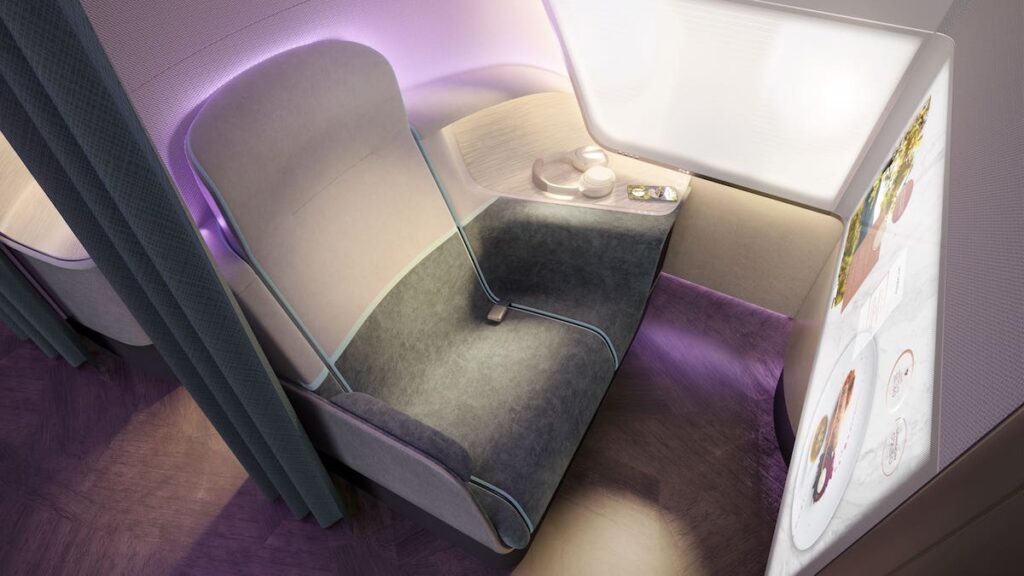Across the globe, pilots, airline executives and disgruntled holidaymakers are all asking the same question: how do you solve an issue like flying in the time of coronavirus?
The short answer is ‘no-one knows’ but the world’s most inventive design studios are turning their pencils to the problem. Now the ‘Pure Skies’ initiative by London-based firm PriestmanGoode has outlined a possible blueprint for pandemic-proof flights, reworking business class and economy to prioritise personal space, hygiene, and ‘touch-free’ travel.
Today’s travellers are largely unwilling to be squeezed in like sardines, so the cheap seats become ‘Pure Skies Zones’ – staggered sets of seating separated by floor-to-ceiling dividers on every other row. Passengers can be positioned around the cabin depending on their needs, accommodating everyone from solo travellers to large families.
The seats themselves will be contained within a hard shell, which in turn is coated with antimicrobial cloth. Every part of the mechanism would be covered – including the recline functions – to ensure easy cleaning.

Gone are the in-flight entertainment screens on the back of seats – partly under the assumption that most modern passengers have devices of their own – while lunch would be served on clip-on trays doled out directly from the trolley.
Airline literature has also been binned and instead of a pocket filled with pamphlets, passengers will be presented with a removable bag in which to store their belongings.

At the front of the plane, passengers paying extra could enjoy ‘Pure Skies Rooms’, train-like compartments that do away with traditional seating entirely. Previously a room of one’s own was offered only by the highest of high-end, and Pure Skies is among the first initiatives to redesign business as well as economy.
Privacy is the new luxury, and each room would contain a single seat separated from the cabin by a curtain. To keep touching to a minimum, the in-flight entertainment system could be synced to passenger devices, while light and temperature could be controlled independently.

Each room would also come with overhead storage space and a private wardrobe to keep clutter to a minimum.
Perception is nearly as important as reality when convincing consumers something is safe, and on entering the plane the seats would flash a message reassuring flyers they’ve been cleaned.

“With both passengers and airline employees at the heart of this project,” said Nigel Goode, co-founding director of PriestmanGoode, “we have not only taken on board present anxieties but also tried to ensure our solutions are future-proofed.
“We also acknowledge that rules and perceptions are continually changing. We firmly believe that by building in additional safeguards and designing out areas that previously caused concern, our Pure Skies concept encompasses a range of innovative and relevant options that will appeal to airlines.”

A lot of money rides on returning passenger planes to the air in a safe, and sustainable manner, and PriestmanGoode is one of several studios to have attempted the challenge.
Some have designed interlocking seat patterns to keep passengers apart, others have created carefully contoured shields to control the direction of airflow. Whichever design ideas emerge triumphant, it is eminently possible that flying may never be the same again.
Would you be happy to fly in a cabin like this? What do you think planes will look like in the future?
– With PA
If you enjoy our content, don’t keep it to yourself. Share our free eNews with your friends and encourage them to sign up.
Related articles:
https://www.yourlifechoices.com.au/travel/news/covid19-changes-air-travel
https://www.yourlifechoices.com.au/travel/news/flight-attendants-divulge-food-facts
https://www.yourlifechoices.com.au/travel/news/bizarre-plane-sustainable-flying

